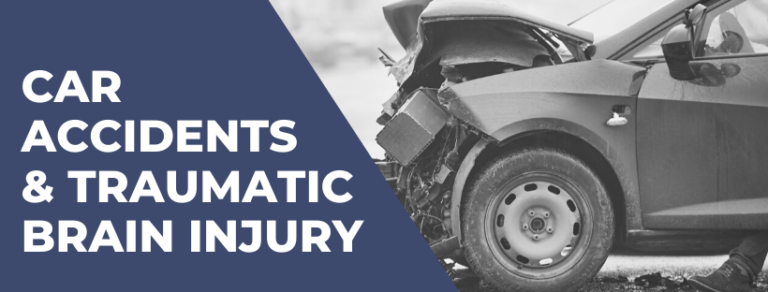Many people only think of black boxes when discussing airplanes, but they are also used to record crash data in car accidents, and as South Carolina personal injury lawyers, we often refer to black boxes in cases.
In this blog, we want to explain how this technology is integral to assessing damages and compensation. The data is vital in personal injury cases as it supports evidence of who was at fault and strengthens a client’s claim. We’ll cover what a back box records, how it affects investigations, and the laws surrounding this equipment.
What Is a Black Box?
Australian scientist Dr David Warren invented the first black box, or flight data recorder (FDR), in 1953. It was designed to capture and store critical flight data and cockpit conversations to help investigators determine the cause of aviation accidents. Dr. Warren initially worked in fuel safety and realized that recording the final moments of a flight could assist in crash reconstruction by providing an objective account of what occurred before and during the event.
His idea was revolutionary for aviation safety, ultimately leading to the modern black box, now a mandated component in commercial aircraft worldwide. The original prototype, the “Flight Memory Unit,” laid the foundation for black boxes as we know them today, contributing immensely to accident analysis and prevention.
Today, practically all modern motor vehicles are fitted with a similar technology, an event data recorder (EDR), typically called a “black box.” Just like the original concept, a black box for a car is categorized by specific features that make it ideal for recording valuable data in the event of a motor accident:
- Durability: Black boxes are constructed with materials that can withstand extreme conditions, such as high-impact forces, heat, and water exposure during a crash.
- Data Accuracy: EDRs record precise, real-time data, including vehicle speed, acceleration, and braking patterns, ensuring reliable information for accident analysis.
- Automatic Activation: These devices activate automatically during certain triggering events, such as abrupt deceleration or airbag deployment, ensuring no manual intervention is required.
These features collectively make EDRs essential for accident investigations, safety improvements, and legal proceedings.
What Does a Car Black Box Record?
An EDR is specified to record specific metrics unique to a road vehicle. They have advanced over decades to work seamlessly with the automobile’s engine, safety systems, control units, and modern-day computers where applicable. Unlike an airplane, it does not record voices to protect privacy but will provide important data about how the car was being driven in the event of an accident. The data includes:
- Speed and Acceleration: Vehicle speed and changes leading up to and during a crash.
- Braking: Brake application timing and effectiveness.
- Steering Input: Steering wheel angle and driver control.
- Seatbelt Usage: Whether occupants were wearing seatbelts.
- Airbag Deployment: Timing and efficacy of airbag deployment.
- Throttle Position: Driver input on the throttle.
- Impact Severity: Force and energy absorbed during a collision.
- Roll Angle: Details about vehicle rollovers, if applicable.
Specialized tools extract this data either through diagnostic ports or directly from the device itself, depending on the manufacturer of the black box. Forensic experts can analyze time-stamped readings and reconstruct a crash. In some cases, even visual simulations are built to be used in court.
Legal Requirements for Black Boxes in the U.S
EDRs became a compulsory feature in most new U.S. vehicles from September 1, 2014, following regulations issued by the National Highway Traffic Safety Administration (NHTSA). These rules were introduced to standardize data collection and improve road safety. The key legal features include:
- Mandatory Installation: Nearly all new passenger vehicles manufactured since 2014 are required to have EDRs that record crash-related data, such as speed, braking, and airbag deployment.
- Standardization of Data: Federal rules standardize what data EDRs record and how it’s formatted, making using the information in investigations and legal cases easier.
- Ownership of Data: While EDRs are mandatory, the data recorded belongs to the vehicle owner. Access by third parties, including law enforcement or insurers, typically requires explicit owner consent or a court order and a warrant.
- SC-Specific Applications: Courts in South Carolina, like others in the U.S., recognize EDR data as admissible evidence in personal injury lawsuits. However, accessing this data without proper authorization can violate privacy laws, making legal procedures essential.
These requirements ensure that EDRs are effective tools for improving vehicle safety and support their role in accident reconstructions and personal injury claims.

Black Box Data in South Carolina’s Personal Injury Cases
Black box data is an invaluable resource for personal injury lawyers in South Carolina. While the technology records vital crash-related metrics like speed, braking, and airbag deployment, its legal value lies in how it supports legal claims in motor accident disputes.
In personal injury cases, black box data provides objective evidence to help clarify fault and liability. For instance, it can confirm whether a driver was speeding, failed to brake, or made sharp steering adjustments before a crash. This data is particularly useful in contested cases where eyewitness accounts or police reports may be unclear or contradictory.
In court cases involving road accidents, black box data is often submitted as evidence, provided it has been obtained legally. This requires explicit owner consent, a subpoena, or a court order to ensure privacy laws are respected. For legal teams, retrieving and analyzing this data promptly is crucial, as it may be overwritten after a certain period or damaged if the vehicle is not handled correctly after the crash.
In personal injury lawsuits, this information is used to reconstruct accidents, identify negligence, and negotiate settlements. For example:
- Proving Negligence: Black box data can verify reckless or impaired driving behaviors, such as excessive speeding or harsh braking.
- Product Liability Claims: If a malfunction, such as brake failure or delayed airbag deployment, contributed to injuries, black box data can help establish fault against manufacturers.
- Maximizing Compensation: Objective crash data strengthens claims for medical costs, lost wages, and other damages by clearly showing how the accident occurred.
For accident victims in South Carolina, having legal representation familiar with black box data ensures this critical evidence is fully utilized to support their case.
Steps to Take After a Car Accident
Some EDRs continuously record data, while others are triggered when they detect changes in velocity or if the airbag is deployed, among other crash-like events. If you are unsure, you should check with your manufacturer to learn the specifications of your car’s black box.
It’s vital to get the data to your insurance company and a personal injury lawyer, if necessary, in the event of a collision, as black box data is eventually overwritten. After ensuring you and any passengers are safe and contacting emergency services if needed, follow these steps after a car accident:
- Notify Your Insurance Company: Report the crash to your insurance provider as soon as possible. This will initiate the claims process and allow them to gather relevant information about the incident.
- Consult with a Personal Injury Lawyer: If there are injuries or the responsibility for the accident is unclear, seek advice from a personal injury lawyer. They can assist in obtaining the necessary data, especially if access to the black box requires a court order or specific authorization.
- Retrieve the Data: Work with your lawyer and forensic experts to access the EDR data. This process may involve using specialized tools to extract and preserve the data promptly, as it can be overwritten if not collected quickly.
- Legal Representation: Your lawyer will interpret the data and help use it as evidence to prove fault and support your case. This data can strengthen your claim and achieve a favorable outcome in legal proceedings.
By following these steps, you can effectively utilize black box data to strengthen your case and potentially achieve a more favorable outcome in a personal injury claim.
Don’t Hesitate to Contact a Personal Injury Lawyer
If you have been in an auto accident, the disruption it can cause in life might be overwhelming. Whether it’s contacting insurance, dealing with physical recovery, medical expenses, or taking time off work, having a personal injury lawyer can help the process immensely.
At The Clardy Law Firm, we treat our clients and their cases with the personal care they deserve. We can deal with insurance companies and retrieve black box data, analyzing it with specialists to help build your case and get you the compensation you deserve. Get in touch today for a free case evaluation.
FAQs
Does a black box record an accident?
Yes, an EDR records crucial data leading up to, during, and after a collision. It captures metrics such as vehicle speed, acceleration, braking patterns, airbag deployment, and seatbelt usage. This data helps investigators understand the sequence of events and can be crucial for determining liability in accidents.
How can black box data be used in personal injury cases?
Black box data plays a significant role in personal injury cases by providing objective evidence of how a vehicle was being driven before and during an accident. This data can support claims about fault, speed, and the actions of the driver, making it invaluable for legal proceedings. It is used to reconstruct the crash, helping prove negligence and calculate appropriate compensation.
How can I find out if my car has a black box installed?
You can typically check if your vehicle is equipped with a black box by consulting your vehicle’s manual, contacting the manufacturer, or visiting a dealership. Some newer vehicles come with this technology as standard, especially those manufactured after regulations mandated the inclusion of EDRs in 2014. For more detailed information, you may need to inspect your car’s electronics system or consult a professional mechanic.




